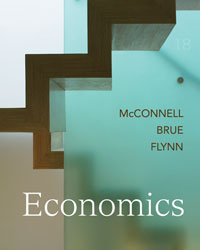
Economics (McConnell), 18th EditionChapter 18: Antitrust Policy and RegulationOrigin of the Idea
The theory of Creative Destruction was formulated by Joseph Schumpeter (1883-1950). Known by his family and friends as Jozsi (pronounced Yoshi), Schumpeter was born in the Austrian province of Moravia (now part of the Czech Republic). He studied law and economics at the University of Vienna and went on to practice law and teach political economy. He also worked briefly as the minister of finance of the Austrian Republic in 1919. In 1932 he joined the economics faculty at Harvard, where he taught until his death. Schumpeter also has the distinction of being the first foreign-born president of the American Economic Association. While Schumpeter argued that innovation was the key to economic growth in the capitalist system, he also believed that such innovation simultaneously destroys old products, production methods, and any monopoly power held by the firms producing the displaced products. |  |















